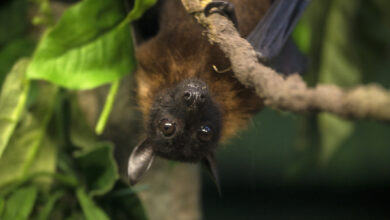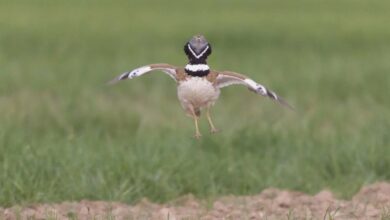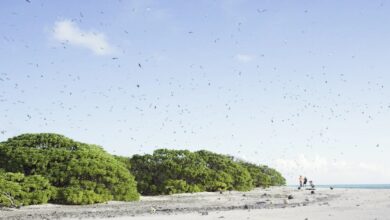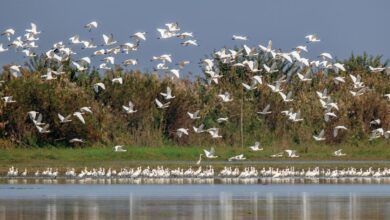A sandhill crane stands over a Canada gosling it adopted in Madison, Wisconsin. Such interspecies adoptions appear to have become more common in recent years. Photo & Video Credit: Cynthia Carlson
Animals USATwo Sandhill Cranes and a Gosling: a Rare Cross-Species Adoption
In a small pond in Madison, Wisconsin, the United States, two tall sandhill crane parents are raising a baby Canada goose as their own, the third confirmed instance of such a cross-species adoption.
“Fifty years ago, neither species was around here,” explains Michael Ward, an ornithologist at the University of Illinois Urbana-Champaign. “Conservation has brought both of these species back.”
According to the International Crane Foundation, such adoptions happen more often for several reasons. Geese are grazers and thrive in a wide range of developed spaces like manicured retention ponds. In contrast, cranes are omnivores and seek out wetlands with more habitat diversity, but both species find themselves in an area of ecological overlap. It is possible that a Canada goose laid an egg in the cranes’ nest. Or cranes took over a goose nest, which already contained a goose egg, after spring floods washed out theirs. Crane parents are attentive to their adopted gosling, feeding, sheltering, and defending it. Who knows what the future holds for the baby geese? Each species flies and migrates differently. But there is still hope. The gosling could rejoin its species, later incorporating itself into a gaggle of geese. Also, sandhill cranes are known for strong nest site fidelity, meaning that they defend the same territory season after season. The eastern population of sandhill cranes has rebounded from fewer than 20,000 birds in 1979 to 110,000 in 2023. As for Canada geese, their number increased from 1.26 million in 1970 to around seven million today.



